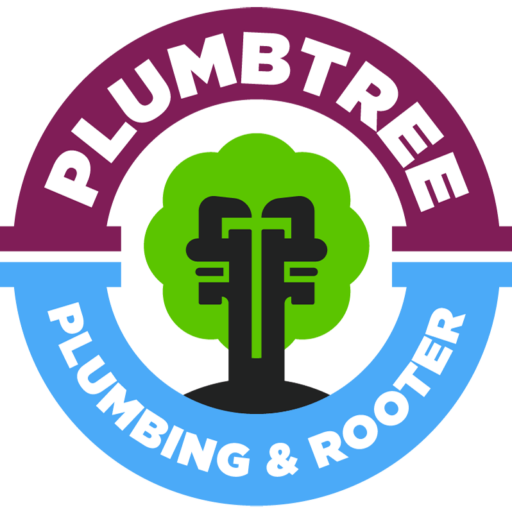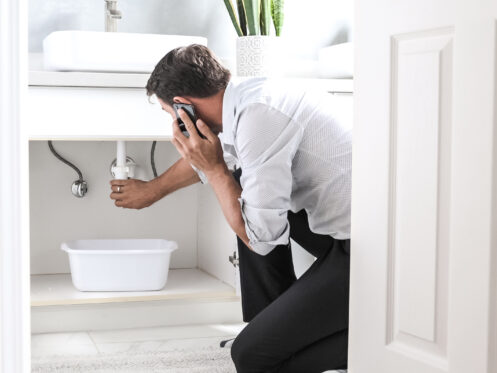Water leaks can be a homeowner’s worst nightmare, especially when they go undetected. However, early detection can bring a sense of relief, as it allows for prompt action and prevents extensive damage. At Plumbtree Plumbing & Rooter in San Jose, CA, we understand the importance of early detection when it comes to plumbing issues. We help homeowners with their plumbing needs, ensuring that all leaks are detected early and dealt with quickly. It’s important to address leaks as soon as you can to avoid extensive damage and costly repairs to your plumbing system. Read on to learn more about how to find invisible water leaks in your plumbing system.
Understanding the Causes of Hidden Water Leaks
Effective detection and prevention of invisible water leaks depend on an understanding of their sources. Because the source of a leak can vary, the fixes themselves will differ. A common reason is aging plumbing, as wear and tear can result in loose fittings, cracks and pinhole leaks. Older homes with decades of wear and tear on their plumbing systems make older infrastructure especially vulnerable.
Poor craftsmanship or incorrect installation is a major contributing factor to hidden water leaks. Leaks that remain unseen behind walls, under floors, or in ceilings could be the result of improperly installed pipes, couplings, or fittings. For instance, a loose connection or poorly sealed joint can lead to a significant amount of water loss over time. Even minor installation mistakes like these can cause substantial water damage if left undetected.
Foundation shifts and structural movements can also be to blame. Pipes may become misaligned as a result of ground movement brought on by shifting soil conditions or a building settling, which can result in leaks. Even small earthquakes have the potential to worsen this problem. Tree roots and other environmental elements have the ability to make their way into subterranean pipes and harm them. The roots can enter via minor cracks and grow over time, eventually blocking water flow and damaging the pipes.
High water pressure, while it may seem beneficial, can actually put stress on your fixtures and pipelines, potentially leading to leaks. Excessive pressure can cause pipes to burst or joints to fail, resulting in significant water damage. It’s important to ensure that your water pressure is within the recommended range for your plumbing system to prevent these types of leaks. Lastly, normal wear and tear might result in concealed water leaks. As a result of constant use, water heaters, appliances, and fixtures like faucets and toilets might eventually develop leaks.
Common Areas Where Water Leaks Hide
Hidden leaks frequently happen in parts of the house that you may not visit often or are difficult to access. This makes them especially problematic. However, being aware of the typical places for water leaks and actively looking for them can help you be more alert and proactive in spotting and fixing them before they cause serious harm.
Leaks that are hard to see often happen behind walls. Leaks may occur in pipes that are installed incorrectly, have excessive water pressure, or are corroded. Paint that is peeling, mold development, and moist spots are indicators of concealed wall leaks. Another troublesome spot is beneath the flooring, where leaks can be very sneaky. Carpets may feel damp or warp, and hardwood floors may become musty-smelling. In most cases, leaking plumbing fixtures or pipelines are the source of these leaks.
Ceilings are another common place for water leaks to hide. These leaks usually come from plumbing lines on higher floors or a poorly sealed roof. Water leaks are easily identified by water stains, leaking water, or drooping ceilings. Basement areas and crawl spaces are of particular concern because they frequently contain important plumbing parts like sump pumps and water heaters. In these places, look for indications of mold, moisture, or standing water.
Leaks often occur in the areas surrounding dishwashers, washing machines and refrigerators as well as under sinks. Check beneath these sections frequently for puddles, moisture, or water stains. Due to their high moisture content, bathrooms are common places for undetected leaks. There may be leaks in the shower pan, around the base of the toilet, or in the grout and seals surrounding the bathtub.
Leaks can also occur in attics, frequently as a result of problems with condensation or the roof. Check for mold, water stains, or a musty smell, particularly following a period of intense rain. Finally, water can seep through cracks in external walls and foundations, which is frequently the result of improper waterproofing, clogged gutters, or poor drainage.
Early Warning Signs of Concealed Water Damage
Early warning signs of water damage that are hidden are often minor but very important to find. If you see spots of discoloration or wetness on the walls, ceilings, or floors, these could be signs of secret leaks. When there is water damage, there is often a musty or wet smell that means mold is growing. Another red flag is if your water bills go up for no clear reason. Also, peeling paint or wallpaper, warped floors, and water stains that you can’t explain are all important signs of secret water problems.
Using Water Meters to Pinpoint Leaks
Using your water meters to locate leaks is a simple and effective way to find concealed problems in your home. Since the meter measures how much water your home uses, you can use its readings to find leaks that you might not have noticed otherwise.
To use it to detect a leak, first, find your water meter. It’s usually near the curb in front of your house or in a basement or utility room. Also, make sure all your home’s water-using tools and fixtures are deactivated. These include sinks, toilets, showers, and appliances like dishwashers and washing machines. Make sure that nobody in the home is using water.
At least one to two hours should pass before checking the meter again. If the number has changed, it means that water is still flowing, which points to a leak. Some water meters also have specific leak detection features, like small wheels or screens, that move or change when water is being used. As a result, a leak can be signaled by even small movements.
After finding a leak, the next step is to keep it from spreading. Simply turn off your home’s main water valve to do this. Later, look at the meter one more time. The leak is inside your home if the meter stops moving. Leaks are most likely in the supply line between the meter and your home if it keeps moving.
Contact Us Today
Finding hidden water leaks is an important skill for every homeowner because it helps prevent damage and expensive fixes from happening. You can take steps to protect your house by learning about the most common causes and warning signs of hidden leaks. Together with regular checks of weak spots and tools like water meters and moisture monitors, these can help you find and fix leaks quickly. But if you’re not sure, don’t be afraid to call a professional to detect the leaks. Your home will be safer if you find and fix a secret water leak quickly. That’s where Plumbtree Plumbing & Rooter comes in with our plumbing solutions. We provide drain cleaning, drain repair, hydro jetting, leak detection, sump pumps, and tankless water heater services in San Jose, CA.
Need help locating and fixing water leaks in your home? Contact Plumbtree Plumbing & Rooter today!

